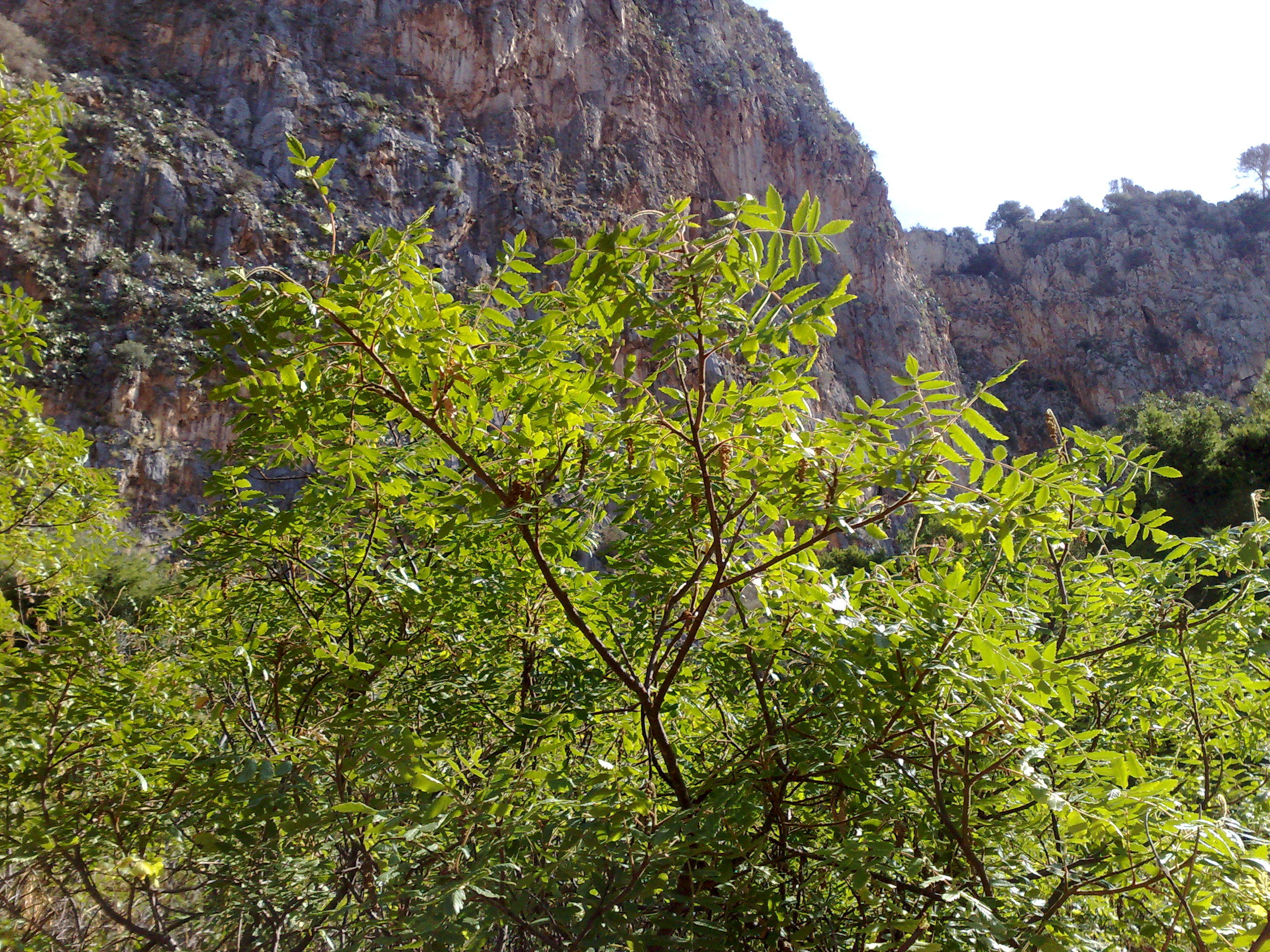
Scientific classification
| Kingdom: | Plantae |
| Clade: | Tracheophytes |
| Clade: | Angiosperms |
| Clade: | Eudicots |
| Clade: | Rosids |
| Order: | Sapindales |
| Family: | Anacardiaceae |
| Genus: | Rhus |
| Species: |
R. coriaria
|
Characteristics
Siciliam sumac (Rhus coriaria L.) is a deciduous shrub or low tree from the family Anacardiaceae. It grows 1-3 meters high. The root system is superficial and densely branched. The bark is thin, gray-brown, initially densely glandular hairy at young shoots. The buds are densely covered with light brown hairs. The leaves are complex, oddly feathered, 12-20 cm long, make them 11-15 leaves which are 2-4 cm long, with serrated margins, hairy in reverse. It is a bicameral plant, distinguishing between male and female plants. The flowers are bisexual, whitish-green, clustered into clustered inflorescences up to 25 cm long. It blooms in June and July. The fruits are small, roundish, reddish kernels containing small, black seeds. They ripen in the fall and stay in the tree for a long time through the spring.

Habitat – Range
It is widespread in southern Europe, southwest and central Asia. It grows in shrubs, in sunny to semi-shady areas, in moderately acidic soils, up to 1300 m above sea level. Propagation is done by seed and vegetative cuttings and root shoots. It tolerates poor soil, with large shoots of roots.
Use
The fruits are harvested before they are fully ripe, dried and ground into powder, mixed with salt and other spices and used as a spice blend. The crushed fruits can be immersed in water for 10-15 minutes, the liquid is strained, sweetened and drunk like lemonade.
The leaves and shoots contain black, the root and fruits give red while the bark contain yellow color. The leaves are used to flavor tobacco. In some countries (Spain, Italy, Iran, Afghanistan), Rhus coriaria is cultivated to produce tannins.

